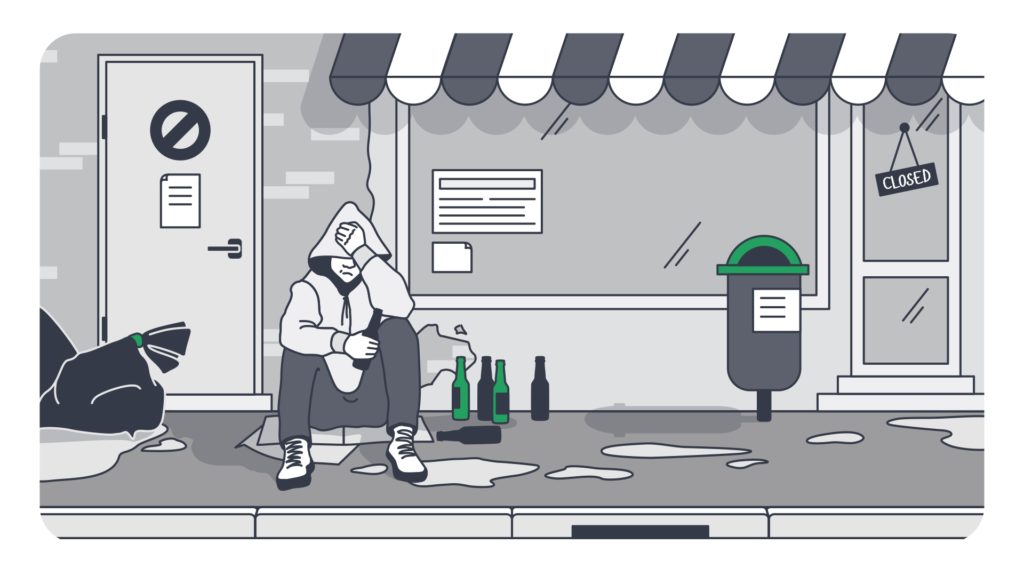A Conversation with Dr. Sally Satel

When Dr. Sally Satel finished her psychiatry residency at Yale, she was interested in working with schizophrenia patients. This was a problem, because while she wanted to remain at Yale, the medical centre didn’t have any jobs aimed at such patients available at the time. There was, however, an ongoing crack epidemic raging in New Haven.
Because crack was believed to be a psychotomimetic substance — one that could cause delusions, hallucinations, and paranoia — Dr. Satel thought that working in the drug treatment program at the Veteran’s Medical Center associated with Yale School of Medicine, might be an interesting way of treating and researching psychosis.
So, Dr. Satel became an assistant professor whose first job was running the drug and alcohol treatment program at the West Haven Veterans Administration Medical Center. Once she did, she developed a deeper interest in addiction.
“I realised that [addiction] really ran the entire spectrum, from neurobiology all the way to social problems. It was a very broad canvas of factors,” she explains.
Fortunately, her interest has been to society’s immense benefit, because in the intervening years, Dr. Satel has developed an impressive body of work in the field of addiction. Between 1989 and 1993, she was an assistant professor of psychiatry at Yale. She remains a lecturer there today.
She’s also authored several books about addiction and other health topics. Her most recent book, Brainwashed: The Seductive Appeal of Mindless Neurobiology, was a finalist for the 2013 ‘Los Angeles Times Book Prize’ in Science.
Dr. Satel is also a frequent contributor on C-SPAN and Fox News, and she’s participated on a number of health panels. She recently gave a TEDx Talk on addiction at the Annual Meeting of the National Council on Behaviour and Health in March 2019.
Above: Dr. Sally Satel’s TED Talk on addiction recorded in Nashville, USA, March 2019
Today, Dr. Satel is a resident scholar at American Enterprise Institute (AEI) where she examines mental health policy, as well as political trends in medicine. She’s also the staff psychiatrist at a local methadone clinic in D.C.
With her background, Dr. Satel has a unique insight into the field of addiction, and in her judgment, the traditional view of addiction is problematic.
Addiction as a brain disease: a flawed model?
In particular, Dr. Satel disagrees with the National Institute on Drug Abuse’s (NIDA) brain disease model of addiction. This model is based on the fact that repeated drug use can lead to changes in the brain. These changes create problems with self-control, interfering with someone’s ability to resist drugs.
Worse, because these brain changes can be persistent, addiction is considered a ‘relapsing’ disease… meaning that even years after being treated for drug addiction, people remain at increased risk of returning to drugs.
Dr. Satel agrees with NIDA that drugs create changes in the brain. However, she feels that the organisation’s perspective is far too reductionist.
“NIDA’s definition completely obliterates personal agency. It would suggest that medications are necessary but insufficient treatments for drug addiction.”
Dr. Satel believes that the brain disease model overlooks a huge factor in addiction — the important psychological factors at play. She points out that she’s never met a happy person with a drug problem. Hence the use of the term problem.
Furthermore, most people manage to control their drug use without becoming addicted. However, researchers do not study these people.
“People who can’t or don’t want to control their drug use are, in my experience, and in every addiction memoir I’ve ever read, people who have turned to drugs to manage some sort of inner turmoil,” she says.

Most importantly, Dr. Satel points out, the ‘brain disease’ model, which implies that the patient’s brain is ‘hijacked’ to the point of rendering the patient incapable of doing anything but continuing use, predicts that addicted individuals cannot respond to sanctions or incentives — yet they do so routinely.
With addiction, she explains, “We have an avalanche of data on so-called contingency management in which people modify their behaviour, based on what’s offered to them as small punishment or, better yet, modest rewards.”
Contrast that to someone with a classic brain disease like Alzheimer’s. “You could threaten to kill their dog if their memory continued to deteriorate or give them a million dollars if it didn’t, but it would not matter.
“That’s a meaningless proposition for an Alzheimer’s patient, because the kind of brain changes they suffer from do not allow them to respond to consequences in order to modify the course of their condition,” she explains.
Why would NIDA name addiction a brain disease?
Dr. Satel describes the ‘addiction as disease’ model as a smart strategic move on NIDA’s part. As she wrote in an article for The Boston Globe,
‘The formulation’s appeal is obvious: It is tidy. It signifies medical gravitas and neuroscientific sophistication. It also implies that sufferers should not be subject to social stigma — another benevolent aim — even though most research shows that this kind of reframing is unlikely to reduce the public’s aversion to addicted individuals’.
Dr. Satel also believes that this new way of looking at drug addiction is budget-related. In her article, she explains, “By making the brain the seat of addiction, its champions at NIDA hoped to elicit more funding from Congress for research and treatment. Laudable aims, to be sure, but they’re rooted in the dubious assumption that neurobiology is destiny.”
“I’m making a distinction between ‘disease’ and ‘brain disease’… Drug addiction is certainly a disease, the way psychiatry would regard a disorder, which is a problematic dysfunction in mood, thought and behaviour. But why call it a ‘brain disease’ when that distracts us from all the other important explanatory levels – psychological, behavioural, social, environmental – that influence the development of addiction?”
“But what I always say – and, I would never argue with a patient who wants to think of it as a disease – is that if you want to call it a disease, okay, but just understand the kind of disease it is.
“The primary differences between addiction and conventional medical diseases are first, the responsiveness to contingencies, the critical role of psychological and existential circumstances in the origins and perpetuation of addiction, and the degree to which many afflicted people can will themselves out of the condition.
“I am not saying that the latter is easy, or that people who are struggling to quit should not seek help – of course they should – but the very fact that it is possible to will one’s self out of a destructive behaviour is an important contrast with standard medical illnesses.”
The benefit of not viewing addiction as a brain disease
As Dr. Satel writes in the Boston Globe,
‘A swirl of circumstances surrounds the addicted individual. And when even a few of them change, quitting and recovery can look more attractive and achievable to [the addict]. That may happen spontaneously in the face of new rewards, say, when a new relationship comes along or a child is born, or new threats in the form of a spouse threatening to leave, for example. These shifting dynamics can motivate the addict to quit on her own, contrary to assertions that addicts cannot just stop. Still, many cannot quit unaided; in that case, treatment can become the necessary catalyst to help her deploy her intrinsic capacity for choice and control. This contextual alchemy gets lost when the brain looms so large in the explanation of addiction.‘
In her interview with us, Dr. Satel goes on to say that not viewing addiction as a brain disease “is a much richer way of looking at the phenomenon. It gives you more understanding of why people act the way they do and why people sabotage themselves with excessive drug use.
“A more subtle appreciation of the anatomy of the problem helps direct the kinds of strategies that are more effective.”
She explains that there are emotional factors at play that lead people to use drugs. “People use for reasons; perhaps to numb their feelings; perhaps to modify them.
“None of this argues against the value of medications, such as methadone, buprenorphine, or naltrexone for opioid addiction. These medications are valuable because they suppress withdrawal symptoms and craving,” Dr Satel points out. “This is often essential to stabilising a patient so that he or she can engage in the hard work of recovery.”
However, she adds, “If the clinicians don’t help [the patient] deal with the deeper underlying problems, which may range from self-loathing to living in a community where there seems to be no hope, no opportunities, and a lot of boredom, then it’s rare that you would achieve a stable recovery.”
Addiction from a broader perspective
Although NIDA has understandable reasons for calling addiction a brain disease, it may be time to reconsider that perspective. While of course, biology is involved in drug addiction, it’s hardly the only factor.
As Dr. Satel points out, “Psychic pain plays an outsized role in addiction, making opioids an excellent short-term balm for existential maladies like self-loathing, emptiness, erosion of purpose, and isolation.”
But the key is to remember that these drugs are short-term bandaids and that health workers need to also look to more long-term solutions.
This of course, means removing the ‘brain disease’ label and refocusing the discussion on what the biological, psychological, social and cultural factors are that are spurring on the activity.
That perspective might look like the one Dr. Satel writes about where,
‘We would view addiction as a set of behaviours powered by multiple intersecting causes across several dimensions — biological, psychological, social, and cultural. For any given user at any given time, one or several of these factors may be more or less influential.’
It is this depth of approach that makes addiction far more likely to be treated. After all, as Dr. Satel says, calling addiction a brain disease “is simply far too reductionist.”



